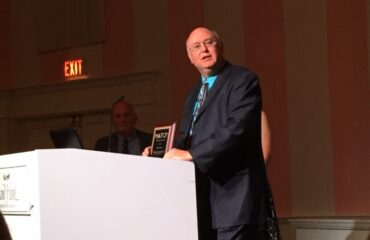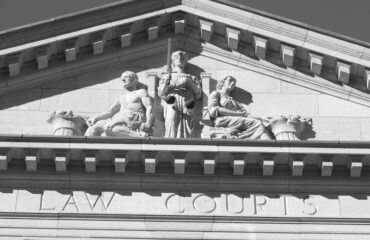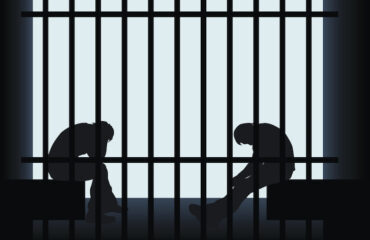Legal training tends to emphasize a set of criteria for evaluating fairness in the courts that differs in some notable respects from those the public uses when deciding what is fair and what promotes trust. That gap creates the potential for misunderstanding when judges set out to define what the public expects and the quality of the interaction by any judge to the public dialogue. Judges should periodically consider how their training and experience on the bench shapes their concept of fairness in ways that litigants and the public might not share. It is possible, as well, that a disconnect can be present even when judges talk to other lawyers about fairness and how adherence to procedural justice principles can generate trust in the judiciary.
There is little research available to explore the possibility that can be used to study how judges, the legal profession, and the public think and talk about fairness in the courts in different ways.[i] There is only one survey, to my knowledge, that can test for such differences. The Judicial Council of California commissioned a survey in 2005 of the state’s lawyers as part of a project that also surveyed the State’s residents. Many of the same questions were asked of a random sample of lawyers and of the public. The public survey included 2,400 randomly selected California residents; the attorney survey included 524 attorneys in active practice (drawn randomly from a list of all such attorneys provided by the State Bar Association).
Trust and Confidence in the Courts
The public and attorney surveys focused on the relative importance of six criteria as predictors of “trust and confidence” in the California courts. They were:
- Respect: Being treated with dignity and having one’s rights respected
- Neutrality: Believing that decision-makers are honest and impartial, using facts
- Voice: Having an opportunity to express one’s views to the decision-maker
- Benevolence: Decision-makers perceived as caring, sincerely concerned about individuals
- Distributive justice: Results in outcomes that are fair
- Performance: Instrumental concerns related to efficiency and ease of court business
For the analysis, attorneys were distinguished by the extent to which they had courtroom experience, separating practicing lawyers into those with “low” levels from those with “high” levels of interactions with the courts. (To see the underlying statistical analysis, go HERE.)
The main findings include:
First, legal professionals evaluate judges differently than do members of the public in fundamental ways. Attorneys give greater weight than the public to distributive justice and to instrumental court performance. Procedural fairness criteria also are important, but to a lesser degree.
Second, instrumental concerns were of importance only to attorneys; public perceptions of court characteristics such as perceived timeliness did not influence levels of trust.
Third, attorneys were not monolithic in their views. Attorneys with low levels of involvement with the courts rely more strongly on procedural justice concerns more than do lawyers with higher levels of involvement. In this, “low involvement” attorneys are perhaps closer to the general public in their focus on procedural justice consideration when evaluating the courts.
Fourth, distributive justice appears to be more important to attorneys with a high level of involvement than those with low levels of involvement). The respective beta weights (which is the measure used to establish the strength of the relationship to trust), were (0.34 versus 0.18), and satisfy readers who are statistically minded.
Fifth, attorneys with low levels of court interaction tend to rely more on procedural justice than on distributive justice in evaluating how much to trust the courts. In deciding on how much to trust the courts, both “high involvement” attorneys and litigants with high levels of direct court experience relied less than others on procedural justice criteria. This has a parallel in the public, where repeat court users tended to think in some ways like “high involvement attorneys.[ii]
Sixth, the concept of procedural fairness itself can be divided into two sets of concerns. One set measures “quality of decision-making” and the other “quality of treatment.” In testing their relative importance, the statistical model of what predicts trust in the courts included the impact of distributive justice and instrumental importance on levels of trust. “Listening carefully” and “protecting rights” were statistically significant criteria, while “respect,” which was a statistically significant factor among the general public, was not.

In sum, the survey findings suggest that legal professionals evaluate judges differently than do members of the public, and that neither the public nor the legal profession are monolithic in their approaches to fairness in the courts and what makes courts trustworthy. Attorneys gave greater weight to distributive justice and to instrumental court performance than the general public. But the details matter in deciding on what this means for efforts to build trust in courts. Those attorneys with the least involvement with the courts tend to rely more heavily on procedural justice concerns in predicting trust than do their “high involvement” counterpart. It is possible that any “high involvement” effect might be particularly strong among trial court judges.
Conclusion
These survey findings are offered as food for thought. The results come from one survey in one state. They may or may not generalize to the situation in 2023 or to other states. But it is noteworthy that evidence exists that when members of the public, lawyers, and judges think about and talk about fairness in the courts, and trust there might be some failures to communicate.
[i] Rebecca Hollander-Blumoff (2017) “Fairness Beyond the Adversary System in Procedural Justice Norms for Legal Negotiation, Fordham Law Review 85, 5, p. 2089.
[ii]See Rottman, D., Hanson, R, Mott, N. and L. Grimes, “Perceptions of the Courts in Your Community: The Influence of Experience, Race and Ethnicity.” Final Report of the National Center for State Courts to the National Institute of Justice, US Department of Justice for additional analysis on this point.
Get more articles like this
in your inbox
Subscribe to our mailing list and get the latest information and updates to your email inbox.
Thank you for subscribing.
Something went wrong.







